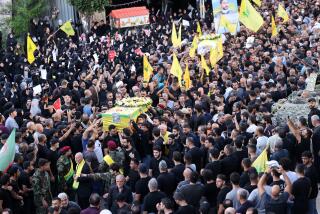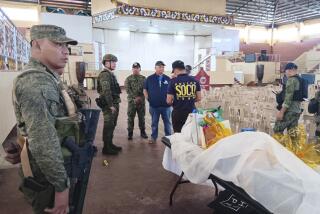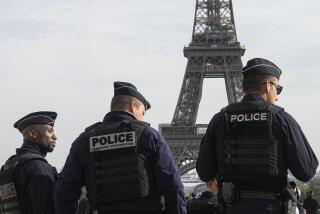Philippines Warns of More Terrorist Attacks
- Share via
MANILA — The Philippine government warned of more terror attacks after five powerful bombs tore through the capital area Saturday, killing at least 14 people, injuring as many as 100 others and unleashing a nationwide climate of fear, blame and suspicion.
There were no credible claims of responsibility for the attacks in the greater Manila area, but there were plenty of theories. Police hinted that Muslim rebels could be involved. A presidential spokesman implicated communist rebels. And the powerful political opposition hinted at unidentified forces who want to distract the population from President Joseph Estrada’s impeachment trial on corruption charges.
The embattled president, in a brief televised address five hours after the bombings, tried to calm nerves.
“I assure you we will use all the forces of our law enforcers to halt this violence,” Estrada said. “I have directed the chief of staff of the armed forces of the Philippines to mobilize its intelligence agencies.”
The first four blasts--on a train and a bus and at an airport and a park--happened nearly simultaneously, sending thousands of panicked residents rushing from buildings in fear of more bombings.
The explosion on the train was the most destructive: It blew the light-rail transport train’s front coach apart as it pulled into Manila’s Blumentritt station at noon. At least nine people died, and scores were injured.
“The train was approaching when I heard the explosion in the front coach,” said Mari Vicpaglan, a ticket clerk at the station. “It was so loud. I tried to help them. I felt dizzy because of the number of people pleading for help.”
Elsewhere, a bomb destroyed a bus in Quezon City, in the greater Manila area. At least one person died, and 15 were hurt. The terminal was severely damaged.
A third blast came near a large aviation fuel depot at Manila’s Ninoy Aquino International Airport. At least six people were hurt, but the depot did not explode.
The fourth bomb exploded on a bench in a park near the U.S. Embassy, wounding at least nine, blasting a 2-foot crater in the ground and damaging buildings about 650 feet from the embassy. The bomb apparently was not directed at the embassy.
Later in the day, police found a fifth bomb at a gas station near the Dusit hotel. They tried to defuse it, but the device exploded, killing one bomb expert immediately. Another died in a hospital later.
It was not immediately clear which bombs killed the 13th and 14th victims.
The attacks left many Manila residents jittery and police swamped with reports of suspicious packages. Several commercial centers were evacuated after false alarms.
Witnesses said a suspicious package on a counter in a shopping mall sparked a stampede as people fled the building. Police bomb experts found mangoes in the package.
The areas hit by the explosions were cordoned off, holding back masses of onlookers, and television stations urged people to stay away.
The attacks further darkened a political atmosphere that was already tense as Estrada’s future teeters on the outcome of his impeachment trial, which resumes Tuesday in the Senate.
More to Read
Sign up for Essential California
The most important California stories and recommendations in your inbox every morning.
You may occasionally receive promotional content from the Los Angeles Times.










